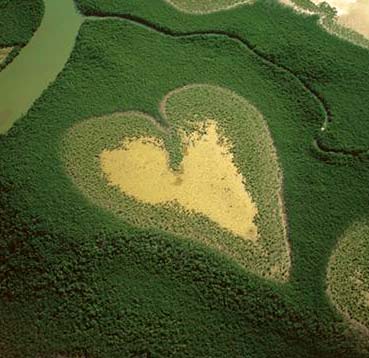|
Caption from a photograph in the exhibition Earth from the Air 31 July to 26 September 2004 - Daily 10am to 7pm Royal Botanic Gardens, Edinburgh |
|
© Yann Arthus-Bertand/Impact Photos S 20°57’ E 164°41’France, New Caledonia. Mangrove swamp of Coeur de Voh. Mangroves are amphibious wooded formations that are commonly found in tropical and subtropical coastal regions. They develop where the ground is salty and muddy and exposed to the changing tide. They consist of various halophyte plants (plants able to grow in soil with high salt contents). They exist in four continents, covering a total area of 105,570 square miles (170,000 km2), that is, almost 25% of the world's coastal areas. New Caledonia, the group of islands in the Pacific over 11,535 square miles (18,575 km2), includes 124 square miles (200 km2) of a rather shallow mangrove (25 to 30 feet), but it is very dense, especially along the west coast of the largest island, Grande-Terre. In certain places on land-where seawater is only present at high tide-vegetation is replaced by barren and salty stretches of land, known as tannes. These are abundant in the areas surrounding the city of Voh, where nature has drawn a clearing in the shape of a heart. Rich in biological diversity, the mangrove is a fragile that undergoes the pressures of various human activities: overexploitation of natural resources, agricultural expansion, coastal, urbanisation, pollution, etc.
|
|
'Earth from the Air' |
|
